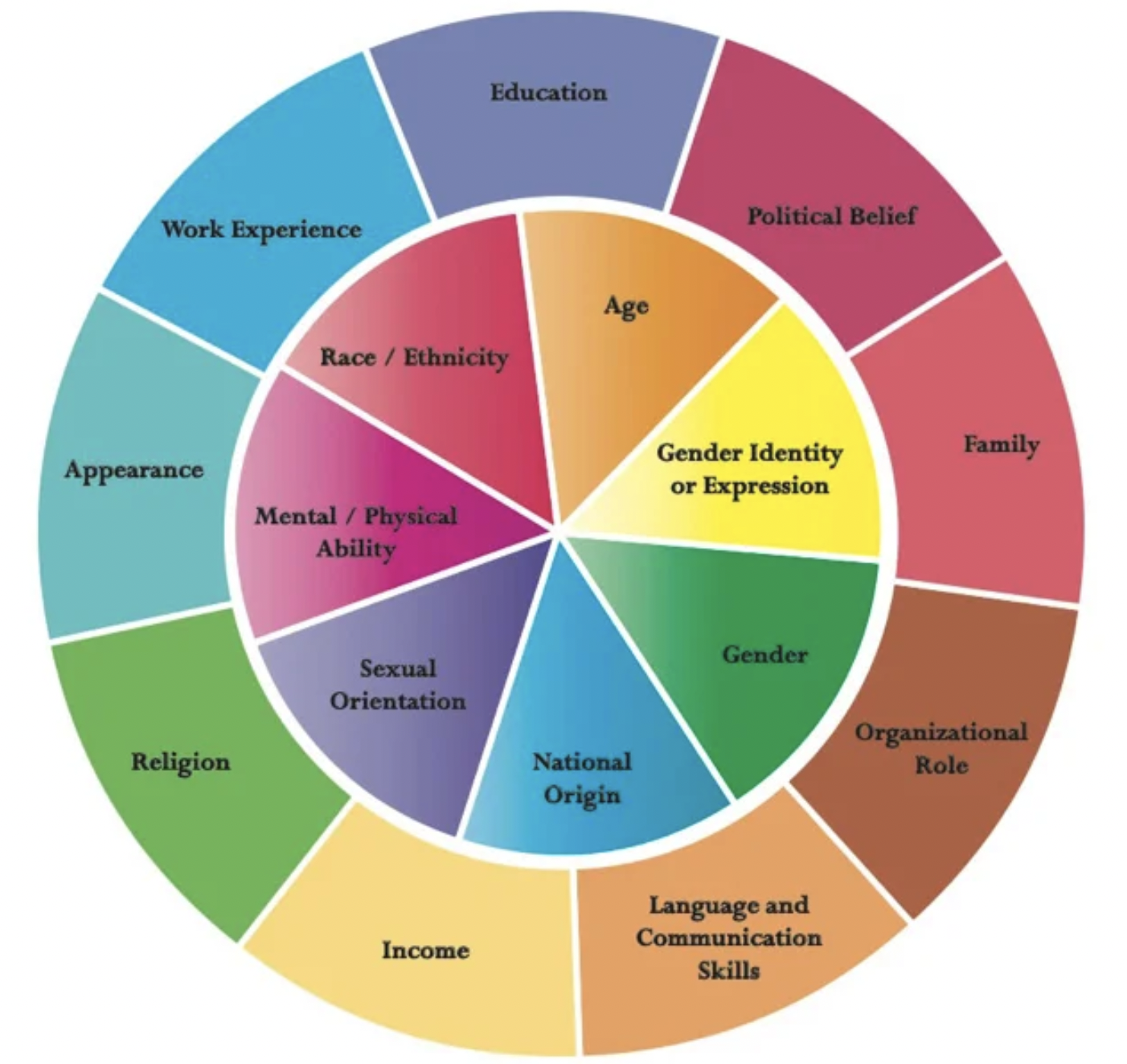Seeing The Unseen: Invisible Diversity
This month we welcomed Mariah Reeves and Abigail Lofte to expand upon the DEI discussion. We went far beyond the visible diversity we see such as race, but to the lesser-seen parts that make us all unique individuals. Following along with their slides below!
Diversity Has Many Layers
In part one of our DEI series with Mariah in 2021, we focused on Racial and Ethnic Diversity. When we look at all of the components that make up diversity, the visual is just one of many parts. All of these layers are interconnected as seen in the wheel graphic. There are inner and outer layers of diversity that present various social labels. We need to lean in to really understand the unique voices and perspectives of those around us.
Why Should We ‘See The Unseen?’
We are looking to transition the focus from outward, visible differences in our personal, professional, and social spaces to unseen differences. By seeing the unseen differences, we are better able to understand our community on a macro level, but also realize the point of view many of our coworkers, friends, and families are seeing the world.
Sexuality + Gender Identity
Throughout the generations, sexuality and gender identity have looked very different from a public perspective. Those who identify within the LGBTQIA+ community have a lens from which they see the world just like anyone else. But how do we be more cognizant of seeing the unseen? Language is bar far one of the simplest ways you can be an ally. Think about the language you use to describe others. How do you brand events or holiday gatherings? Are they inclusive to families that may look different from your own?
We had some wonderful discussions on this topic within the group. And so much of being an ally comes down to using your voice to support others. Individuals who fall into an unseen area of diversity constantly have to advocate for themselves. How can you make simple choices to advocate for them to help them feel seen?
Political Identity + Religious Ideology
Most people will tell you not to talk politics or religion to avoid a heated debate. But it is important to understand how and why individuals see the world the way they do. In Dubuque County, the fair majority of registered voters are affiliated with the Democratic Party. But just because an individual is associated with something, their actions may be reflected differently. In the last Presidential Election, Dubuque County votes 50.7% for Donald Trump, the Republican candidate. What does this mean for us when we entered a room? Check your preconceived notions at the door. We can not assume that one falls into a majority purely based on the previous affiliation. Keep this in mind, especially in the workplace. While we are not encouraging you to have a roundtable debate on the current political climate, be aware that there is a good chance your coworkers see the situation differently than you do.
When it comes to religion, most would assume that Dubuque is entirely Catholic. While yes, compared to the rest of the country, Dubuque has a much higher concentration of Catholicism, the region on accounts for 54% of those who identify as religious in our county. From other denominations of Christianity to Islam and Judaism, Dubuque has a wide array of religious representations. We can no longer assume that just because you are from Dubuque you are Catholic or were raised Catholic. Each religion has a different approach and point of view, therefore we cannot even lump all Christians into the same category. Religion is a guide post for many and shapes a moral view. When we see the why behind the actions and beliefs of those around us through their religious ideology, we can better understand and accept them for who they are.
Neurodiversity + Universal Design
Neurodiversity is a relatively new term. It refers to the range of differences in individual brain function and behavioral traits, regarded as part of normal variation in the human population. This can range from learning disabilities and differences to cognitive differences. The other piece of this is ableism. Ableism is the discrimination in favor of the able-bodied person. Think about what you are physically and mentally capable of doing? Does it comes easy to you or do you have barriers in your way? Has the world adapted to you or have you had to adapt to the world? This is where Universal Design begins.
Universal Design refers to the design of buildings, products, or environments to make them accessible to all people, regardless of age, ability, or other factors. This can be anything from being an ADA-compliant building to making sure that all have access to the proper health care they need. In Dubuque County alone, the ratio of Health Care Providers to Patients is concerning. Is it hard to imagine providing quality care to over a thousand individuals on a regular basis? And the real kicker is 9% of Dubuque County residents are uninsured making access to care even more of a hurdle.
Rate of Primary Care Providers for Dubuque County is 1,229:1, Compared to State average of 1,386:1
Rate of Mental Health Providers for Dubuque County is 991:1, Compared to State average of 1,144:1
It’s Only The Begining
This is truly just scratching the surface of invisible diversity. We are all vastly unique individuals who deserve to be seen as whole beings. Take the time to learn and be an ally to those around you. It can be a tough road, but it will be worth it.
“The only calibration that counts is how much heart people invest, how much they ignore their fears of being hurt or called out or humiliated. And the only thing people regret is that they didn’t live boldly enough, that they didn’t invest enough heart, didn’t love enough. Nothing else really counts at all.” - Ted Hughes


